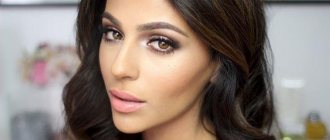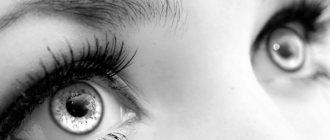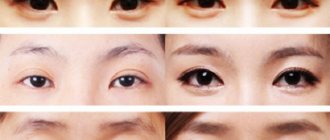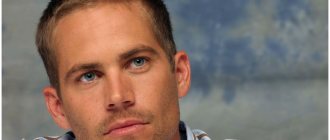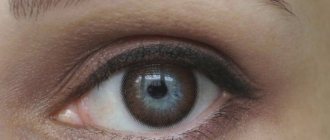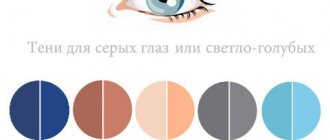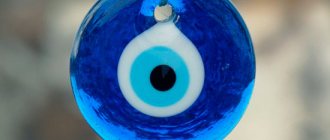The floor goes to our expert, anesthesiologist-resuscitator of the Kirov Regional Clinical Ophthalmological Hospital Dmitry Sedykh .
Doctors have a special attitude towards eye injuries: the structure of the organ of vision, directly connected to the cerebral cortex, is so complex that any damage to it can cause serious and sometimes irreparable harm to a person’s health, or even life.
Most often, eye injuries are of a domestic nature. They are divided into:
Indications for wearing
There are two indications for the use of the occluder.
- Congenital strabismus, which can be obvious or hidden. In the second case, the pathology is much more difficult to determine, so it is recommended from early childhood to be examined by an ophthalmologist.
- Amblyopia is a visual impairment in one eye that cannot be corrected with contact lenses or glasses.
To determine how long you need to wear the bandage, it is recommended to register with an ophthalmologist. He periodically examines the eyeballs using diagnostic tests to determine the presence or absence of improvement. The effectiveness of the device may be slow, so it is recommended to use it for as long as possible.
Burns
Why do they happen? We are talking about burns from hot liquids - steam, open flame, vegetable oil splashed into the eye from a frying pan. Women often receive this injury while cooking.
What to do before seeing a doctor. Rinse the eye with running cold water for 15–20 minutes. Then cover the eye with a clean cloth (bandage) and consult a doctor, call an ambulance.
What not to do. Self-administer hormonal or antibacterial eye ointments and creams. They must be prescribed by an ophthalmologist. Otherwise, you can get serious complications.
Diagnostics before prescribing an occluder
To identify indications for using a bandage, it is recommended to undergo preliminary diagnostic tests:
- Collecting anamnesis of the patient or his close relatives. Parents may complain that the child is unable to see distant objects and has developed a squint in one of the eyes.
- Examination of the superficial structures of the eyeballs. The test can detect obvious strabismus.
- Fundus examination. To do this, Atropine or similar agents are instilled. The doctor examines the fundus of the eye, evaluates the structure of the internal elements, and identifies abnormalities.
- Assessing the presence or absence of binocular vision.
- Assessment of the accommodative ability of the eyeballs.
- Measuring the angle at which the strabismus formed.
- Determination of the refractive power of the cornea and lens.
- Assessment of color perception using diagnostic tables or semi-automatic analyzers.
- Determination of the boundaries of the field of view for which a semi-automatic analyzer is used (ophthalmic perimeter). The negative side of the technique is the impossibility of determining the visual perimeter for young children.
Additionally, the ophthalmologist may advise parents to consult a neurologist. It is possible to identify congenital neurological disorders due to which vision function has been altered. In this case, it will be necessary to treat the primary disease and additionally wear an occluder to completely eliminate the risk of relapse.
Chemical
Why do they happen? After getting into the eye of caustic alkalis, acids, which are contained in household chemicals (for cleaning plumbing, stoves, floors).
What to do before seeing a doctor. The eye must be washed: either by dipping the face in a basin of water, or by pouring water from a kettle for 15 minutes. Then cover with a clean napkin and go to the doctor.
What not to do. Rinse eyes if dry chemicals (quicklime, potassium permanganate, carbide) get into them. In this case, you will only make the situation worse. Try to remove the dry caustic substance with the end of a clean handkerchief and consult a doctor immediately.
Article on the topic
Irreversible consequences within 4 hours. Doctor about the dangers of computers for the eyes
Types of occluders
The device is divided into several types, depending on what material they are made from:
- Textile. It is necessary to use soft materials that will not rub or damage the child’s skin surfaces. They produce a kind of case that is put on glasses. The advantage of this variety is its low cost.
- Patch. This variety is used for gluing to the skin around the eyes. Their cost is slightly higher, since a special material is used that allows air to pass through. As a result, the eye will receive a sufficient amount of oxygen, and atrophy will not form. The cost increases significantly since a new occluder must be glued daily.
- Silicone. This is a reusable device with suction cups on the inner surface; they stick to the skin around the eyes. Its quality is satisfactory, the price is average. The advantage is that there is no need to buy new occluders every day.
Depending on the age for which the use of a bandage is necessary, there are 4 types of it:
- mini (children under 2 years old);
- midi (from 2 to 4 years);
- maxi (from 4 to 6 years);
- bandages for adults, which are divided depending on the size (selection is carried out depending on the size of the glasses frame or the physiological characteristics of the eye structure).
Ophthalmologists recommend choosing a device strictly according to age. It is recommended to use disposable patches, which are much better than other models.
It is prohibited to wear a bandage that is smaller or larger. In this case, it is possible to put the healthy eye back into work, which completely eliminates the effect of the previous therapy. To eliminate the risk of purchasing an occluder incorrectly, you can consult an ophthalmologist after purchasing it. He will tell you whether the person has chosen the right bandage.
Life Safety “Basic types of dressings”
Developed by:
Life safety teacher-organizer
Responsible for Comprehensive Security
Alexey Alexandrovich Evdokimov
Head and neck bandages
To apply bandages to the head and neck, use a bandage 10 cm wide.
Circular headband
It is used for minor injuries in the frontal, temporal and occipital areas. Circular tours pass through the frontal protuberances, above the ears and through the occipital protuberance, which allows you to securely hold the bandage on your head. The end of the bandage is fixed with a knot in the forehead area.
Cross headband
The bandage is convenient for injuries to the back of the neck and occipital region ( Fig. 5.1 ). First, securing circular tours are applied to the head. Then the bandage is carried obliquely down behind the left ear to the back of the neck, along the right side surface of the neck, passed to the front of the neck, its side surface on the left and raised obliquely along the back of the neck above the right ear to the forehead. The bandage moves are repeated the required number of times until the wound is completely closed. The bandage is completed with circular tours around the head.
Headband "bonnet"
A simple, comfortable bandage that firmly fixes the dressing on the scalp ( Fig. 5.2 ). A piece of bandage (tie) about 0.8 m long is placed on the crown of the head and its ends are lowered down in front of the ears. The wounded person or an assistant holds the ends of the tie taut. Perform two fastening circular bandage rounds around the head. The third round of the bandage is carried out over the tie, circled around the tie and led obliquely through the forehead area to the tie on the opposite side. Wrap the bandage around the tie again and lead it through the occipital region to the opposite side. In this case, each stroke of the bandage overlaps the previous one by two-thirds or half. Using similar strokes, the bandage covers the entire scalp. Finish applying the bandage with circular turns on the head or fix the end of the bandage with a knot to one of the ties. The ends of the tie are tied with a knot under the lower jaw.
Bridle bandage
It is used to hold dressing material on wounds in the parietal region and wounds of the lower jaw ( Fig. 5.3 ). The first securing circular moves go around the head. Further along the back of the head, the bandage is passed obliquely to the right side of the neck, under the lower jaw, and several vertical circular passes are made, which cover the crown or submandibular area, depending on the location of the damage. Then the bandage from the left side of the neck is passed obliquely along the back of the head to the right temporal region and the vertical rounds of the bandage are secured with two or three horizontal circular strokes around the head.
In case of damage in the chin area, the bandage is supplemented with horizontal circular moves, grasping the chin ( Fig. 5.4 ).
After completing the main rounds of the “bridle” bandage, move the bandage around the head and move it obliquely along the back of the head, the right side surface of the neck and make several horizontal circular moves around the chin. Then they switch to vertical circular passages that pass through the submandibular and parietal regions. Next, the bandage is moved through the left surface of the neck and the back of the head and returned to the head and circular tours are made around the head, after which all rounds of the bandage are repeated in the described sequence.
When applying a bridle bandage, the wounded person must keep his mouth slightly open, or place a finger under his chin while bandaging, so that the bandage does not interfere with opening the mouth and does not compress the neck.
The patch on one eye is monocular ( Fig. 5.5 ).
First, horizontal fastening tours are applied around the head. Then, in the back of the head, the bandage is passed down under the ear and passed obliquely up the cheek to the affected eye. The third move (fixing) is made around the head. The fourth and subsequent moves are alternated in such a way that one move of the bandage goes under the ear to the affected eye, and the next one is a fixing one. Bandaging is completed with circular moves on the head.
The bandage on the right eye ( Fig. 5.5 a ) is bandaged from left to right, on the left eye ( Fig. 5.5 b ) - from right to left.
The bandage on both eyes is binocular ( Fig.
5.5 c ).
It begins with circular fixing tours around the head, then in the same way as when applying a bandage to the right eye. After which the bandage is applied from top to bottom to the left eye. Then the bandage is directed under the left ear and along the occipital region under the right ear, along the right cheek to the right eye. The bandages shift downwards and towards the center. From the right eye, the bandage returns above the left ear to the occipital region, passes above the right ear to the forehead and again passes to the left eye. The bandage is finished with circular horizontal rounds of the bandage across the forehead and back of the head.
Neapolitan bandage for the ear area.
The moves of the bandage correspond to the moves when applying a bandage to the eye, but pass above the eye on the side of the bandaged ear ( Fig. 5.6 ).
Head scarf.
The base of the scarf is placed in the back of the head, the top is lowered onto the face. The ends of the scarf are tied on the forehead. The top is folded over the tied ends upward and secured with a safety pin ( Fig. 5.7 ).
Sling bandage.
Sling-shaped head bandages allow you to hold dressing material in the nose ( Fig. 5.8 a ), upper and lower lips, chin ( Fig. 5.8 b ), as well as on wounds of the occipital, parietal and frontal regions ( Fig. 5.9 ). The uncut part of the sling is used to cover the aseptic material in the wound area, and its ends are crossed and tied at the back (the upper ones are in the neck area, the lower ones are on the back of the head or on the crown).
To hold the dressing material on the back of the head, a sling is made from a wide strip of gauze or cloth. The ends of such a bandage intersect in the temporal areas. They are tied on the forehead and under the lower jaw.
In the same way, apply a sling-shaped bandage to the parietal region and forehead. The ends of the bandage are tied at the back of the head and under the lower jaw.
Neck bandage.
Apply with circular bandaging. To prevent it from sliding down, circular rounds on the neck are combined with rounds of a cruciform bandage on the head ( Fig. 5.10 ).
Chest bandages.
The conical shape of the chest and changes in its volume during breathing often lead to the bandages slipping. Bandaging the chest should be done with wide bandages and additional techniques for strengthening the bandages should be used.
To apply bandages to the chest, gauze bandages with a width of 10 cm, 14 cm and 16 cm are used.
Spiral chest bandage.
It is used for chest wounds, rib fractures, and treatment of purulent wounds ( Fig. 5.11 ). Before applying the bandage, a gauze bandage about a meter long is placed with the middle on the left shoulder girdle. One part of the bandage hangs loosely on the chest, the other on the back. Then, with another bandage, fastening circular tours are applied in the lower parts of the chest and in spiral moves (3-10) the chest is bandaged from the bottom up to the armpits, where the bandage is secured with two or three circular tours. Each round of the bandage overlaps the previous one by 1/2 or 2/3 of its width.
The ends of the bandage, hanging loosely on the chest, are placed on the right shoulder girdle and tied to the second end, hanging on the back. A belt is created, as it were, that supports the spiral passages of the bandage.
Occlusive dressing.
It is applied using an individual dressing package (PLP) for penetrating chest wounds. The bandage prevents air from being sucked into the pleural cavity during breathing.
The outer shell of the bag is torn along the existing cut and removed without disturbing the sterility of the inner surface. Remove the pin from the inner parchment shell and take out the bandage with cotton-gauze pads. It is recommended to treat the surface of the skin in the wound area with boron petroleum jelly, which provides a more reliable sealing of the pleural cavity.
Without disturbing the sterility of the inner surface of the pads, unroll the bandage and cover the wound penetrating into the pleural cavity with the side of the pads that is not stitched with colored threads. Unfold the rubberized outer shell of the bag and cover the inner surface with cotton gauze pads. The edges of the shell should be in contact with the skin lubricated with boron vaseline. The bandage is fixed with spiral rounds of the bandage, while the edges of the rubberized sheath are pressed tightly against the skin.
In the absence of an individual dressing package, the bandage is applied using small or large sterile dressings. Cotton-gauze pads are placed on the wound and covered with a paper bandage cover, after which the dressing material in the wound area is fixed with spiral rounds of bandage.
Bandages for the abdomen and pelvis.
When applying a bandage to the abdomen or pelvis at the site of a wound or accident, gauze bandages with a width of 10 cm, 14 cm and 16 cm are used for bandaging.
Spiral bandage on the stomach.
In the upper part of the abdomen, strengthening circular tours are applied in the lower parts of the chest and the abdomen is bandaged in spiral moves from top to bottom, covering the area of damage. In the lower part of the abdomen, fixing tours are applied in the pelvic area above the pubic symphysis and spiral tours are carried out from bottom to top ( Fig. 5.12 ).
The spiral bandage, as a rule, is poorly maintained without additional fixation. The bandage applied to the entire abdominal area or its lower parts is strengthened on the thighs using a spica bandage
Upper limb bandages.
Returning finger bandage. Used for injuries and diseases of the finger, when it is necessary to close the end of the finger ( Fig. 5.13 ). Bandage width – 5 cm.
Bandaging begins along the palmar surface from the base of the finger, goes around the end of the finger and runs the bandage along the back side to the base of the finger. After bending, the bandage is carried along a creeping path to the end of the finger and bandaged in spiral rounds towards its base, where it is secured.
Spiral bandage on the finger ( Fig. 5.14 ).
Most hand wraps begin with circular securing strokes of the bandage in the lower third of the forearm just above the wrist. The bandage is passed obliquely along the back of the hand to the end of the finger and, leaving the tip of the finger open, the finger is bandaged in spiral moves to the base. Then the bandage is returned to the forearm through the back of the hand. Bandaging is completed with circular rounds in the lower third of the forearm.
Spiral bandage for all fingers (“glove”) ( Fig. 5.15 ).
It is applied to each finger in the same way as to one finger. Bandaging on the right hand begins with the thumb, on the left hand - with the little finger.
Spica bandage for the thumb ( Fig. 5.16 ).
Used to close the area of the metacarpophalangeal joint and elevate the thumb.
After securing the moves over the wrist, the bandage is led along the back of the hand to the tip of the finger, wrapped around it and again along the back surface to the forearm. These moves reach the base of the finger and the end of the bandage is secured to the wrist. To cover the entire thumb, the bandage is supplemented with returning rounds.
Cross-shaped bandage on the hand ( Fig. 5.17 ).
Covers the dorsum and palmar surfaces of the hand, except for the fingers, fixes the wrist joint, limiting the range of movements. Bandage width – 10 cm.
Bandaging begins with securing circular tours on the forearm. Then the bandage is passed along the back of the hand onto the palm, around the hand to the base of the second finger. From here, along the back of the hand, the bandage is returned obliquely to the forearm.
To more securely hold the dressing on the hand, cross-shaped moves are supplemented with circular moves of the bandage on the hand. Complete the application of the bandage in circular motions over the wrist.
Returning bandage on the hand ( Fig. 5.18 ).
Used to hold dressing material when all fingers or all parts of the hand are damaged. When applying cotton-gauze pads or gauze napkins to wounds or burn surfaces, it is necessary to leave layers of dressing material between the fingers. Bandage width – 10cm.
Bandaging begins with securing rounds above the wrist, then the bandage is passed along the back of the hand onto the fingers and, with returning strokes, covers the fingers and hand from the back and palm.
After which the bandage is applied in a creeping manner to the fingertips and the hand is bandaged in spiral rounds towards the forearm, where the bandage is completed in circular rounds above the wrist.
Scarf bandage for the hand ( Fig. 5.19 ).
Place the scarf so that its base is located in the lower third of the forearm above the area of the wrist joint. The hand is placed with the palm of the hand on the scarf and the top of the scarf is folded onto the back of the hand. The ends of the scarf are circled several times around the forearm above the wrist and tied.
Spiral bandage on the forearm ( Fig. 5.20 ).
To apply a bandage, use a 10 cm wide bandage. Bandaging begins with circular strengthening rounds in the lower third of the forearm and several ascending spiral rounds. Since the forearm has a cone-shaped shape, a tight fit of the bandage to the surface of the body is ensured by bandaging in the form of spiral rounds with bends to the level of the upper third of the forearm. To make a bend, hold the lower edge of the bandage with the first finger of your left hand, and with your right hand make a bend towards you 180 degrees. The top edge of the bandage becomes the bottom, the bottom - the top. At the next round, the bend of the bandage is repeated. The bandage is fixed with circular bands of bandage in the upper third of the forearm.
Turtle bandage for the elbow joint.
In case of injury directly in the area of the elbow joint, a converging turtle bandage is applied. If the injury is located above or below the joint, a divergent turtle bandage is used. Bandage width – 10 cm.
Converging tortoiseshell bandage ( Fig. 5.21 ).
The arm is bent at the elbow joint at an angle of 90 degrees. Bandaging begins in circular strengthening rounds either in the lower third of the shoulder above the elbow joint, or in the upper third of the forearm. Then, using eight-shaped rounds, the dressing material is closed in the area of damage. The passes of the bandage intersect only in the area of the elbow bend. The eight-shaped rounds of the bandage are gradually shifted towards the center of the joint. Finish the bandage with circular tours along the joint line.
Divergent tortoiseshell bandage ( Fig. 5.22 ).
Bandaging begins with circular fastening rounds directly along the line of the joint, then the bandage is alternately applied above and below the elbow bend, covering two-thirds of the previous rounds. All passages intersect along the flexor surface of the elbow joint.
This way the entire joint area is covered. The bandage is finished in circular motions on the shoulder or forearm.
Scarf bandage on the elbow joint ( Fig. 5.23 ).
The scarf is placed under the back surface of the elbow joint so that the base of the scarf is under the forearm, and the top is under the lower third of the shoulder. The ends of the scarf are passed to the front surface of the elbow joint, where they are crossed, circled around the lower third of the shoulder and tied. The top is attached to the crossed ends of the scarf on the back of the shoulder.
Spiral shoulder bandage ( Fig. 5.2 .).
The shoulder area is covered with a regular spiral bandage or a spiral bandage with kinks. A bandage 10–14 cm wide is used. In the upper parts of the shoulder, to prevent the bandage from slipping, bandaging can be completed with rounds of a spica bandage.
Shoulder scarf ( Fig. 5.25 ).
The scarf is placed on the outer side surface of the shoulder. The top of the scarf is directed towards the neck. The ends of the scarf are drawn around the shoulder, crossed, brought to the outer surface of the shoulder and tied.
To prevent the bandage from slipping, the top of the scarf is secured with a loop of cord, a bandage or a second scarf passed through the opposite armpit.
Scarf bandage on the shoulder joint area ( Fig. 5.26 ).
The medical scarf is folded with a tie and the middle is brought into the axillary fossa, the ends of the bandage are crossed over the shoulder joint, passed along the front and back surfaces of the chest and tied in the axillary region of the healthy side.
Kerchief bandage for suspending the upper limb (Fig. 5.27).
Used to support the injured upper limb after applying a soft bandage or transport immobilization bandage. The injured arm is bent at the elbow joint at a right angle. An unfolded scarf is placed under the forearm so that the base of the scarf runs along the axis of the body, its middle is slightly above the forearm, and the top is behind and above the elbow joint. The upper end of the scarf is placed on the healthy shoulder girdle. The lower end is placed on the shoulder girdle of the damaged side, covering the forearm in front with the lower smaller part of the scarf. The ends of the scarf are tied with a knot above the shoulder girdle. The top of the scarf is wrapped around the elbow joint and secured with a pin to the front of the bandage.
Spiral bandage on the first toe ( Fig. 5.28 ).
The width of the bandage is 3-5 cm. Usually only one thumb is bandaged separately. It is recommended to begin bandaging with strengthening circular tours in the lower third of the shin above the ankles. Then the bandage is passed through the dorsum of the foot to the nail phalanx of 1 finger. From here, spiral rounds are used to cover the entire toe to the base and again through the back of the foot the bandage is returned to the lower leg, where the bandage is finished with fixing circular rounds.
Cross-shaped (eight-shaped) bandage on the foot ( Fig. 5.29 ).
Allows you to securely fix the ankle joint in case of ligament damage and some diseases of the joint. Bandage width – 10cm. The foot is placed in a position at right angles to the lower leg. Bandaging begins with circular fixing rounds in the lower third of the shin above the ankles. Then the bandage is moved obliquely along the dorsum of the ankle joint to the lateral surface of the foot (to the outer surface of the left foot and to the inner surface of the right foot). Perform a circular motion around the foot. Next, from the opposite side surface of the foot along its back, they cross the previous course of the bandage obliquely upward and return to the lower leg. Again, perform a circular move over the ankles and repeat the eight-shaped moves of the bandage 5-6 times to create reliable fixation of the ankle joint. The bandage ends in circular motions on the shins above the ankles.
Bandage on the heel area (tortoiseshell type) ( Fig. 5.30 ).
Used to completely cover the heel area like a divergent tortoiseshell bandage. Bandage width – 10 cm.
Bandaging begins with circular fixing rounds on the shins above the ankles. Then the bandage is applied obliquely down the back surface to the ankle joint. The first circular tour is applied through the most protruding part of the heel and the dorsum of the ankle joint and circular strokes are added to it above and below the first one. However, in this case, there is a loose fit of the bandage to the surface of the foot. To avoid this, the bandages are strengthened with an additional oblique move of the bandage, running from the back surface of the ankle joint down and anteriorly to the outer lateral surface of the foot. Then, along the plantar surface, the bandage is moved to the inner edge of the foot and the diverging rounds of the tortoiseshell bandage continue to be applied. The bandage ends in circular circles in the lower third of the shin above the ankles.
Spica-shaped ascending bandage on the foot ( Fig. 5.31 ).
It is used to reliably hold dressing material on the dorsal and plantar surfaces for injuries and diseases of the foot. The toes remain uncovered. Bandage width – 10 cm.
Bandaging begins with circular fixing rounds through the most protruding part of the heel and the back surface of the ankle joint. Then, from the heel, the bandage is moved along the outer surface of the right foot (on the left foot - along the inner surface), obliquely along the back surface to the base of the first toe (on the left foot - to the base of the fifth toe). Make a full circle around the foot and return the bandage to the back surface at the base of the fifth toe (on the left foot - at the base of the first toe). Along the back of the foot, they cross the previous round and return to the heel area on the opposite side. Having walked around the heel from behind, repeat the described eight-shaped rounds of the bandage, gradually shifting them towards the ankle joint. The bandage ends in circular circles in the lower third of the shin above the ankles.
Foot bandages.
There are scarves that cover the entire foot, heel area and ankle joint.
Scarf bandage for the entire foot ( Fig. 5.32 a , b ).
The plantar area is covered with the middle of the scarf, the top of the scarf is wrapped, covering the toes and the back of the foot. The ends are brought to the back of the foot, crossed, and then wrapped around the shin above the ankles and tied with a knot on the front surface.
Scarf bandage on the heel area and ankle joint ( Fig. 5.32 c ).
The scarf is placed on the plantar surface of the foot. The base of the scarf is located across the foot. The apex is located along the back surface of the ankle joint. The ends of the scarf are crossed first on the back of the foot, and then over the top of the back surface of the ankle joint and the lower third of the lower leg. The ends are tied on the front surface of the shin above the ankles.
Spiral bandage with bends on the lower leg ( Fig. 5.33 ).
Allows you to hold the dressing material on wounds and other injuries of the lower leg, which has a cone shape. Bandage width – 10 cm.
Bandaging begins with fastening circular tours in the lower third of the shin above the ankles. Then they make several circular spiral rounds and on the cone-shaped area of the lower leg they switch to bandaging with spiral rounds with bends similar to the spiral bandage on the forearm. The bandage ends in circular circles in the upper third of the leg below the knee joint.
Converging turtle bandage on the knee joint area ( Fig. 5.34 a , b ).
Bandaging begins with fastening circular tours in the lower third of the thigh above the knee joint or in the upper third of the lower leg below the knee joint, depending on where the wound or other damage is located. Then, converging eight-shaped rounds of bandage are applied, crossing in the popliteal region. The bandage ends in circular circles in the upper third of the leg under the knee joint.
A diverging tortoiseshell bandage on the knee joint area ( Fig. 5.34 c ).
Bandaging begins with securing circular tours through the most protruding part of the patella. Then eight-shaped diverging moves are performed, crossing in the popliteal region. The bandage ends in circular circles in the upper third of the leg or lower third of the thigh, depending on where the damage is located.
If it is necessary to apply a bandage to the lower limb in an extended position, use a spiral bandaging technique with bends. The bandage begins with circular moves in the upper third of the leg and ends with fixing rounds in the lower third of the thigh.
Spiral bandage with bends on the thigh. It is used to hold dressing material on wounds and other injuries of the thigh, which, like the lower leg, has a cone shape. Bandage width – 10-14 cm.
Bandaging begins with securing circular tours in the lower third of the thigh above the knee joint. Then the entire surface of the thigh is covered from bottom to top using spiral moves of the bandage with bends. As a rule, such bandages on the thigh are poorly held and easily slip off. Therefore, it is recommended to complete the bandage with rounds of a spica bandage on the hip joint area.
Rice. 5.26. Scarf bandage on the shoulder joint area.
Wearing rules
If the patient is a child, it is more advisable to wear patches. This is influenced by several factors:
- the ability to peep with the healthy eye, which has an eye patch on the glasses;
- increased risk of injury due to excessive activity of the child during running, jumping and other physical activities.
The patch is applied to the healthy eye. This is due to the fact that the child needs to put stress on the sore eye so that it gradually begins to function.
The minimum time to wear the patch in one day is 6 hours. If the doctor decides to increase the wearing time, you can use the bandage at night if the child is used to it. This technique is considered highly effective; the time for therapy is significantly reduced.
Complete elimination of wearing an occluder is possible only on the recommendation of a doctor if the affected eye is fully involved in visual function. It is forbidden to temporarily interrupt therapy, as the achieved effect will be completely eliminated.
If the patient is an adult, it is most advisable to resort to overhead fabric occluders that are attached to glasses. The daily wearing time and duration of therapy are determined by the doctor when making a diagnosis. The higher the strabismus angle, the longer the occluder must be worn.
The average time to wear a bandage can vary, from several weeks to 2-3 years. It depends on the type of disease, the degree of visual impairment, and the exclusion of one eye from functionality.
After completing therapy, your doctor will re-order diagnostic tests. Removal of the patch is only possible if all tests show a positive result and amblyopia or strabismus is completely cured.
Manufacturers
There are many manufacturers of eye pads, but the best quality ones are Ortopad and Opticlude. Both companies have been tested by ophthalmologists and have passed clinical trials.
Ortopad is an Italian manufacturer. It produces patches with a high-quality adhesive base. These patches allow oxygen to pass through well. The possibility of accidentally peeling off the device is completely eliminated, which is why it is recommended for children. There is no discomfort when using it.
Opticlude is produced in Poland. The manufacturer makes soft fabric bandages that do not cause irritation or friction when interacting with the skin. The company also produces adhesive patches that have a soft and thin structure. The material is completely hypoallergenic and does not cause redness or irritation on the skin.
Both manufacturers produce stickers with designs that children may enjoy. To help your child get used to it faster, he can choose the pattern on the overlay himself. This is important if the child categorically refuses to wear the bandage, takes it off and cries.
How to make an occluder at home
It is not recommended to make your own patches. Their adhesive base can damage the baby's delicate skin during peeling. Long-term use of a self-made patch causes hypoxia (oxygen starvation) of the tissue, increasing the risk of allergies and skin irritation.
It is possible to manufacture a tissue occluder. To do this, use soft viscose that does not rub the skin. It allows oxygen to pass through well. Select a dark fabric so that the eye, which is turned off from functionality, cannot see the surrounding objects. It is recommended to sew the pad to the shape of the glasses.
You can sew such a bandage yourself using a needle, or use a sewing machine if you have one. You can fold several fabrics together to make the bandage tighter, so that light and surrounding objects do not shine through it.
Sew a blindfold for sleep
Do you sleep well at night and get enough sleep?
Sometimes I don’t succeed at all. And the traffic light at night looks into the windows with its colors and the bright sun hurts your eyes on weekends... When you especially want to lie down and not be disturbed by anything in the world! They advised me to buy a blindfold, they said it helps! But why buy if you can sew it?
You will need:
1. Main fabric (American cotton, 50x50cm). 2. Fleece or dublerin for knitwear. 3. Non-woven fabric from 37g/m2 for gluing the base. 4. White elastic band 2 cm wide. 5. Pattern of the headband (full size in the attachment). 6. Decorative cotton ribbon. 7. Tools: 7−1) Scissors. 7−2) Safety pin. 7−3) Pins with an eye, a household sewing needle, threads in the color of the fabric or similar. 7−4) Centimeter tape. 7−5) Pencil with soft lead or fabric marker. 7−6) Ruler for needlework (with a red limiter). 7−7) Small scissors for cutting threads (instead of wire cutters). 7−8) Sewing machine.
Step 1
Previously, for greater density of the main fabric, I duplicated cotton with non-woven fabric so that the duplicated area was enough for the two main halves of the headband. Well, I decided to decorate the simple polka dot fabric a little and added embroidery. I embroider on Brother Innovis V3 (on a small hoop). A small gold crown - we girls love such things. But the crown can be replaced with any letters or flower embroidery. Whatever your heart desires!
Step 2
The part where I have the crown is the front part. We turn it over and make markings on the wrong side with a marker or pencil and trace the pattern of the headband (I already have a 1cm allowance).
Step 3
We also take the remaining piece of duplicated fabric, apply it to the main one face to face, pin it and cut it with a small allowance.
Step 4
We are preparing the tape. The finished width of the tape is 2.5 cm, and the length is 49 cm (already with 1 cm allowances on the sides). We make markings on cotton using two lines. The first will be the folding point, the second will be the mark for stitching. There is 2.5 cm between them. We bend the cotton face to face along the line and iron it with an iron. Sew along the stitching mark.
Step 5
Now the resulting tape needs to be turned onto the face. We pierce one side with a safety pin and hide the tip with the loop of the pin inside the “tube”. We pass the pin through the entire “tube” - pull it out by the tip and turn it inside out. Now you can iron it a little. Then, using the same safety pin, insert an elastic band (39 cm with 1 cm allowances). After this, secure the combined ends of the “tube” and the elastic with technical stitching.
Step 6
Let's add a little decorative braid. To do this, stepping back exactly 1 cm from the edge of the finished allowance, we lay a technical stitch in wide steps. This is convenient to do on a machine with a computer, where you can adjust the needle pitch width. You can also lay this line manually using a basting line or draw it with chalk/soap so that the mark disappears later. We place a decorative cotton ribbon along the resulting line, and gather it a little with our fingers at a distance of 1 - 1.5 cm. You can also use a foot to gather the tape. Is it possible to replace my ribbon with lace? It’s all a fantasy!
Step 7
Now we pin our finished ribbon with an elastic band to the resulting front part. Exactly according to the markings face to face. Secure with pins.
Step 8
We close our “sandwich” with the second part of the bandage face to face, and put fleece on top of the second part, so that later it turns out inside the entire structure and gives softness. Secure with pins. We lay the line directly along the same technical line (if there was one) - we observe the allowances. Carefully adjust the layer with decorative tape so that it does not move and get into the seam. Be sure to leave an open space in order to turn the product onto the face (it is best to leave space on the top of the bandage, there are no curved lines there. After stitching and leaving a free part, be sure to make cuts in the lower part of the bandage - in the very bend, not reaching the line 2 mm so that in the end, when we turn the bandage around the face, this place will not have any constrictions.
Step 9
We turn our design on its face. We look carefully at where the technical line is visible. Let's remove it. And at the top we leave it while ironing. Align the parts, bend the upper parts in the free space and iron. I recommend using a wooden cutting board or rolling pin after ironing the piece. The tree quickly absorbs excess moisture and consolidates the result well. Only your board should be new and clean, especially for sewing!
Step 10
We remove the remains of the technical line. Sew by hand with a household needle and thread in color. Iron again. Ready!
Consumer Reviews
Elena, 27 years old: My daughter is 5 years old. We have been using an occluder for a year now to correct minor strabismus. The doctor told me that using the bandage has a good effect. The affected eye is gradually included in the function of vision, its muscles begin to work. The working eye is blocked at this time. We chose an occluder in the form of a patch, we change them daily. It costs a lot, but my daughter's health is more important.
Mikhail, 42 years old: After an eye injury, I developed strabismus. The doctor said that I need to wear an occluder. I chose a cloth bandage because it is much cheaper. Therapy can last for more than one year. Six months have passed, the doctor said that there are already changes. But he advised me not to remove the bandage, so that the already obtained effect would not be eliminated.
